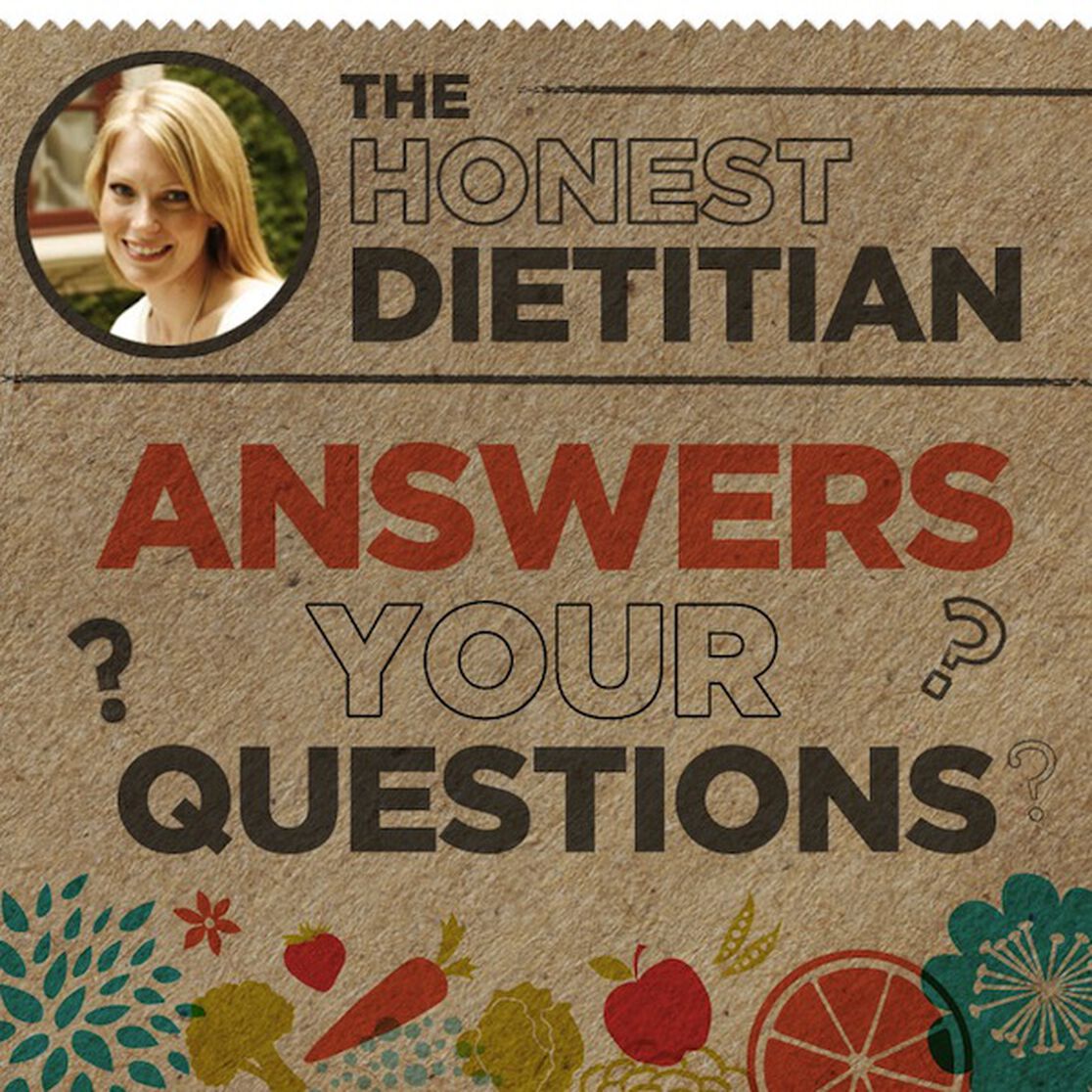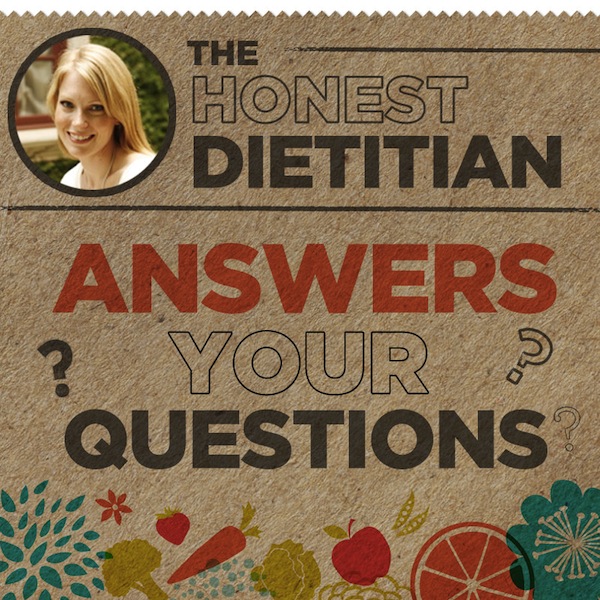You asked, and registered dietitian Nicole Meadow answered! Today, Nicole kicks off her Q&A series by sharing her insights about food, nutrition, and your family's health...especially when it comes to feeding babies and toddlers! Check back soon for related posts and, of course, feel free to ask her more questions in the comments below. She's here to help!
1. We are feeding a family on a tight budget and I prefer to get organic products whenever possible, but sometimes we have to make a choice. How do I prioritize?
I think you can get organic foods by shopping for seasonal produce at your local grocery store or farmers’ market, taking a little extra time to find stores that have sales on organic products, and eating meatless meals a couple times per week. You can save a lot of money! Ultimately, prioritize whatever your child eats the most. And, when you can't afford to buy everything organic, choose foods with the least amount of pesticide residue. The EWG’s Dirty and Clean Dozen Lists and the What's On My Food database are awesome resources to help – together they cover everything from produce to dairy to meats and poultry.
2. Store-bought organic infant food or homemade organic food, which is the healthiest for our infant?
In my honest opinion, it’s much better for babies to eat food from the family table. By the time they’re ready to eat, they’re ready to EAT! You can take almost any food that you make for your family and prepare it for your baby...bake sweet potatoes or chicken and mash them for your little one! Just adjust the texture of the food to his feeding skill. (Dr. Greene also offers great insight on teaching babies to enjoy healthy foods). Babies love flavor, too. Often jarred foods have no taste—have you tasted them recently? Save the packaged food for when you are on the go (we like Plum Organics). Because we want feeding to be fun, always make sure to consult your pediatrician about introducing highly allergenic foods (nuts, peanuts, eggs, soy, fish, dairy, wheat, shellfish) if you have a family history of allergies.
3. Do toddlers really need milk? Are there alternatives to fill in the “nutritional gaps”?
This is a question that I’m asked a lot. Toddlers (or children or adults) do not need milk, per se; they need the nutrients that milk contains—calcium, Vitamin D, protein, and fat. Milk happens to provide a nice “package” housing all of these in once place. But think about kiddos who are allergic to milk, they need to find these nutrients from other sources! Not to mention, we’re the only species on the planet that drinks another species’ milk.
If your child can’t drink milk, or if you prefer not to offer milk, you need to ensure that your child gets enough calcium, Vitamin D, protein, fat, and enough overall calories. (Young toddlers who transition to milk generally get about half of their daily calories from milk. Remember, if you are breastfeeding, you can do so for as long as you and your baby desire. Offer kids a calcium and Vitamin D supplement and a healthy well balanced diet, your breastmilk has the rest!) For those whose kiddos are not drinking milk, ensure they are eating good sources of the following nutrients:
- Protein: Chicken, fish, beans, tofu, cheese, nuts, and seeds.
- Fat: Avocado, nuts, oil, and fish.
- Calcium: Green leafy veggies (kale, spinach, broccoli, etc.), beans, almonds/almond butter, figs, tofu, fortified soy/almond/hemp/rice milk (please note that all have varying levels of protein, fat, and calories). Click to download my chart on non-dairy calcium sources.
- Vitamin D: A little bit of sunshine goes a long way; however, our necessary use of sunscreen can prevent us from obtaining the Vitamin D needed. If you are concerned about your little one’s Vitamin D levels, talk to your pediatrician or pediatric dietitian about a supplement.
4. I have issues getting my toddler to eat, especially if it’s healthy. Any ideas about what I can do? He's not under weight, but it worries me when he doesn't eat much.
First, know that this is probably normal. Many toddlers go through this and, if you stay calm and ride it out, you’ll both get through it. It sounds like he is growing normally, which is a good sign. If you have serious concerns about his ability to eat (chewing problems or he is limited to 4-5 foods, speak to your pediatrician and ask for a referral to a pediatric occupational therapist or pediatric dietitian). My approach with feeding children, especially toddlers, is to follow “division of responsibility” with feeding, a term coined by Ellyn Satter. The parents’ responsibility is the “what, where, and when” of feeding and the child’s responsibility is the “if and how much.” When we, as parents, cross the line and try to get our kids to eat “just one more bite” or “eat your dinner to get dessert,” we’re not teaching our kids to like foods for them, but rather for us—it usually backfires.
Try to have family meals as often as possible, put 1-2 familiar foods along with 1 new “challenge food” so that when he comes to the table he isn’t overwhelmed by being hungry and feeling like there is nothing he can be successful at eating. Have a relaxed dinnertime and talk about fun things based on the ages of everyone at the table—what do the foods feel, smell, and look like? All of these exposures will help get him closer to eating them. And finally patience. Keep cool, and he’ll pass through this stage soon.
5. What are the “NATURAL FLAVORS” that they put in food and drinks, and should we eat and drink them?
The definition of natural flavor under the Code of Federal Regulations is: “The essential oil, oleoresin, essence or extractive, protein hydrolysate, distillate, or any product of roasting, heating or enzymolysis, which contains the flavoring constituents derived from a spice, fruit or fruit juice, vegetable or vegetable juice, edible yeast, herb, bark, bud, root, leaf or similar plant material, meat, seafood, poultry, eggs, dairy products, or fermentation products thereof, whose significant function in food is flavoring rather than nutritional” (21 CFR §101.22).
Wow! That’s quite a mouthful, and I’m sure that TOTALLY clears it up for you. The bottom line is that we need to be aware of what ingredients are in our food, and demand that the government sticks to its responsibility to regulate these ingredients. We also need to make sure that we as consumers read labels carefully. Again, What’s On My Food can help make sense of this. Finally, try to buy less processed food and you won’t run into the natural flavors as often.
~ Nicole Meadow, MPN, RD
This post is solely for informational purposes. IT IS NOT INTENDED NOR IMPLIED TO BE A SUBSTITUTE FOR MEDICAL ADVICE. Before undertaking any course of treatment, you should seek the advice of your physician or other health care provider.
We aim to provide you with the most honest and credible information possible. This article was reviewed for accuracy by The Honest Team and was written based on sources that are linked at the bottom of the article.
blog_review_statement




